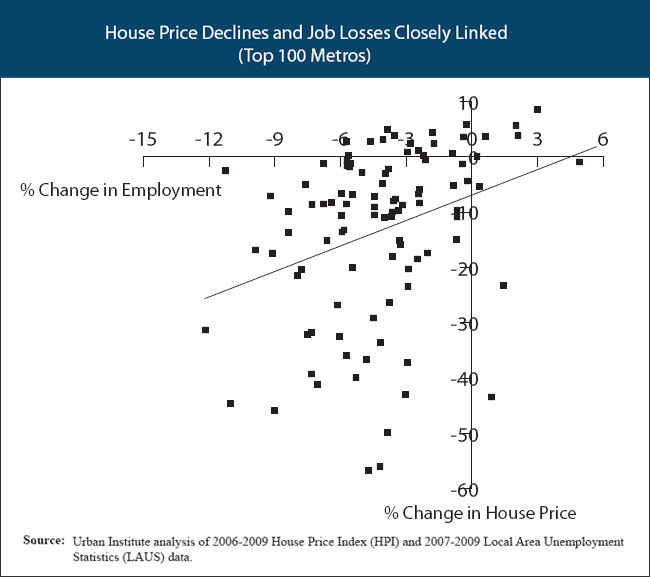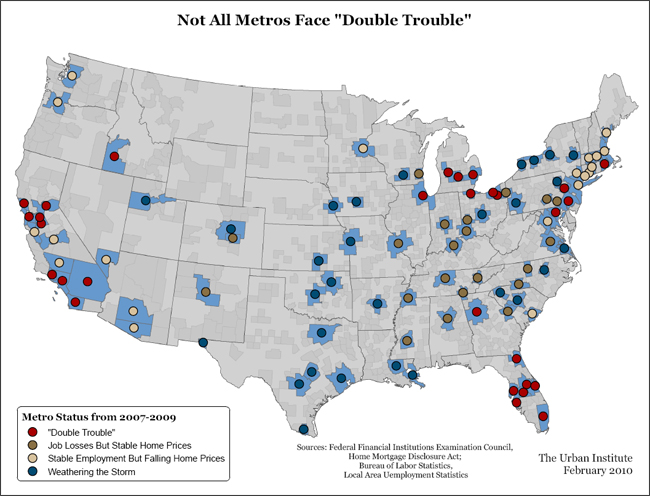
|
|
Economic Recovery Metro Areas Suffering the Worst Housing Shocks Also Lose the Most JobsThe nation's loss of over 6.4 million jobs between 2007 and late 2009 coincided with a 12 percent drop in home values and a dramatic increase in foreclosures. Metropolitan areas in four states—Florida, Arizona, Nevada, and California—experienced the steepest collapse of housing prices, while job losses have been worst where manufacturing was concentrated. Over 38 percent of all jobs lost during the 2007-2009 years were in manufacturing, even though those jobs made up just 10 percent of the total in 2000. If the subprime lending debacle and the housing market shock that followed ignited the recession's spark, the housing-jobs connection is less obvious. Job losses don't always follow dips in home prices. But in metros heavily reliant on manufacturing and construction, local purchasing power disappears with jobs, driving home prices down farther. Another possibility: the triple header of an unprecedented drop in house prices, rise in foreclosures, and subsequent increase in vacancy rates forced builders to slow or stop residential construction—another blow to jobs in the construction industry. Has the pain of the business cycle been widely distributed? Or are metro areas with the most savaged housing markets also suffering from unusually high unemployment? There's certainly a close link. Steeper falls in house prices between 2006 and 2009 went hand in hand with bigger declines in jobs between 2007 and 2009. In fact, for each 15 percent drop in house prices, employment dropped by 1 percent. So metros as diverse as Detroit, Providence, Los Angeles, and Tampa are in the grip of "double trouble"—big house price declines coupled with severe job losses. In contrast, metros like Houston, Wichita, and San Antonio are coming through the downturn relatively unscathed, with flat house prices and much smaller job losses (or even small employment gains). But this link wasn't universal. Bakersfield, California saw a 0.9 percent increase in employment but a 43 percent drop in house prices. And in Greensboro, North Carolina, jobs fell by 6.8 percent while house prices dropped by only a sixth that much. Roughly speaking, the nation's top 100 metros fall into four categories. Twenty-nine urban areas are suffering from "double trouble;" 29 are weathering the storm relatively unscathed; 21 have strong employment despite big house price declines; and 21 are seeing house prices holding steady despite substantial job losses. For most of the metro areas in the "double trouble" group, the sharp downturn followed rapid gains in house prices and employment opportunities earlier in the decade. In fact, the bigger the boom, the harder the fall. House prices across the top 100 metros declined by about 5 percent in 2006-2009 for each 10 percent gain between 2000 and 2006. |
Experts Feedback
Send us your comments to help further the discussion. Share
Commentaries
|







 Bob Lerman
Bob Lerman Tom Kingsley
Tom Kingsley